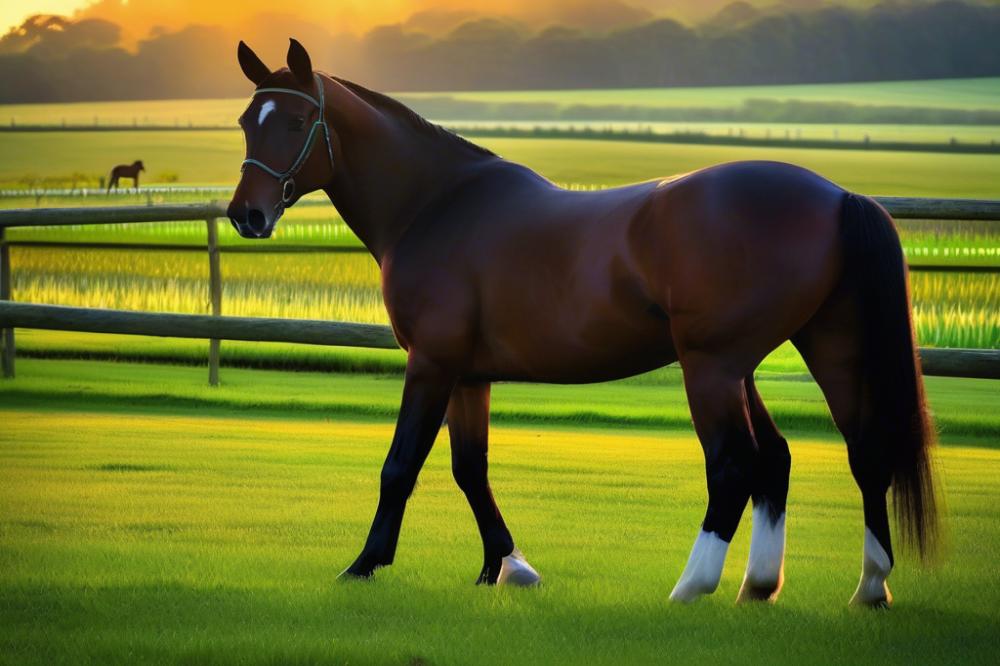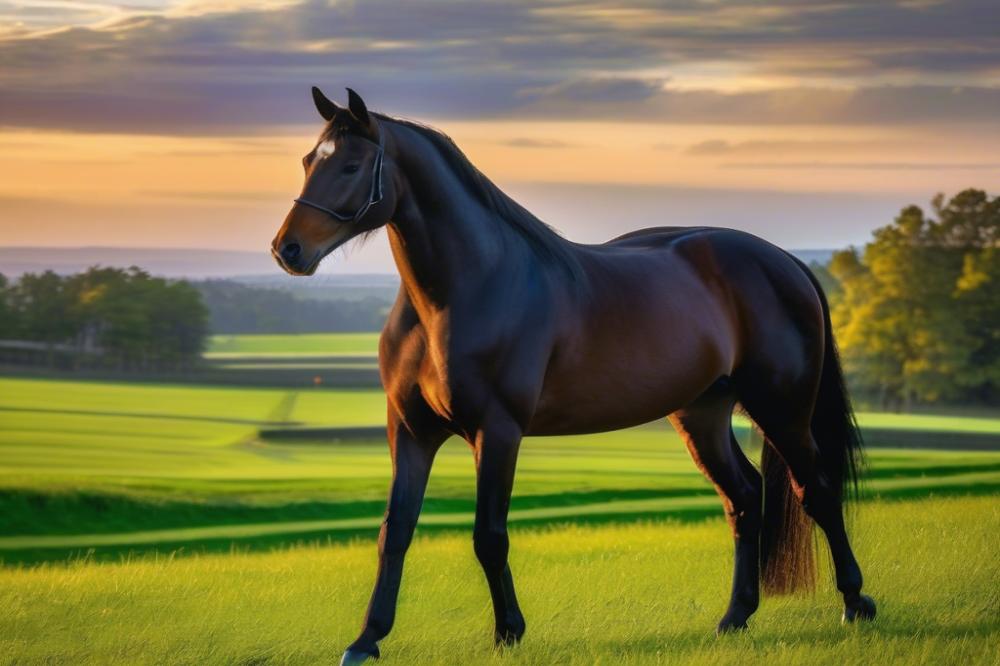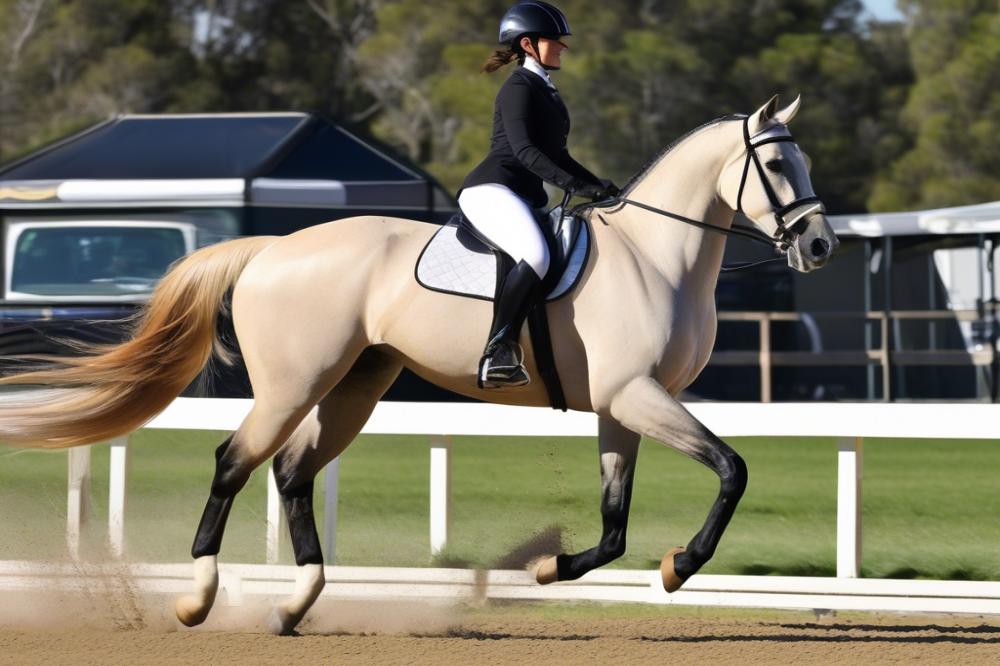Introduction
Standardbreds are a breed of horse well-known for their speed and ability to trot or pace. Many people enjoy riding these horses, whether for racing or leisure activities. Their athleticism can be both impressive and inspiring, making them popular among equestrians. Understanding how to ride them effectively is essential for all types of riding.
Proper riding techniques play a crucial role in maximizing both the horse’s performance and the rider’s enjoyment. Without the right methods, riders may struggle with control and communication. These factors can make riding less enjoyable and even unsafe. Riders should be aware that every movement they make can affect the horse’s response.
The purpose of this article is to provide insights on riding Standardbreds effectively, whether you aspire to race or simply enjoy a leisurely ride. We will explore key strategies that can help you develop a strong partnership with your horse. Gaining this knowledge will not only enhance your riding skills but also promote a bond that elevates your experience. Join us as we delve into the secrets of riding this remarkable breed.
Understanding the Standardbred

Characteristics of the Standardbred Breed
The Standardbred is a breed known for its endurance and versatility. Its body is typically well-muscled and compact. Many have a broad chest, which supports strong lungs and a powerful heart. This structure helps them excel in various equestrian activities. Their legs are generally straight and strong, allowing for good movement. Typical coat colors include bay, brown, black, and chestnut. Their temperament often reflects a balance of intelligence and cooperation, making them suitable for both racing and leisure riding.
Differences Between Racing and Leisure Standardbreds
Not every Standardbred is the same, especially when it comes to their purpose. Racing horses tend to have a more competitive nature. These animals are trained for speed and agility on the track. They often possess sharper, quicker reflexes to respond to the demands of racing. In contrast, leisure horses focus more on comfort and temperament. Riders usually enjoy a calmer and more relaxed style of riding with these animals. Training for leisure often involves slower, more controlled exercises to develop a strong bond between horse and rider.
Importance of Breed Knowledge in Training and Riding
Understanding the breed is crucial when training and riding. Each horse has its own personality and set of abilities. Knowledge about their history and preferences can enhance training sessions. Recognizing a horse’s strengths can help riders focus on key skills. A rider familiar with their horse’s traits is more likely to build trust and communication. This bond leads to a more satisfying experience for both horse and rider. Whether for racing or leisure, being aware of a horse’s specific needs allows for effective handling and care.
Essential riding techniques

Basic Horsemanship Principles
Understanding basic horsemanship is key to a good ride. Start by developing a strong bond with the horse. It’s not just about control; it’s about trust. Always approach from the side, and use soft tones to help them feel calm. Use the right equipment; this includes a well-fitted saddle and bridle. Regular grooming keeps the horse comfortable and can also build that connection. Pay attention to body language; both yours and the horse’s. A calm rider often leads to a calm horse.
Key Riding Tips for Controlling Pace
Controlling pace is essential for riding, especially if you are racing. Start by using your legs to signal the horse. Squeezing gently helps increase speed. Don’t yank on the reins; instead, use them to guide without force. If slowing down, sit back a little. This action naturally encourages the horse to slow its stride. Keep your weight centered when trying to maintain a steady speed. Practice responding to the horse’s movements. Understanding the horse’s rhythm makes riding smoother.
Adjusting Riding Style for Leisure versus Racing
Leisure rides allow for a relaxed style. Comfort is key here—adjust your seat to feel at ease. A light grip on the reins offers more freedom to the horse. In contrast, racing demands focus and precision. Adopt a forward position to catch the wind. Leaning slightly forward can enhance speed. Keep your heels down and balance your weight low. Not every movement needs force when racing. Just the right touch can make a significant difference. Each riding experience teaches something new. Change your mindset based on the riding purpose.
Saddle Fitting and Equipment

Proper saddle fitting plays a crucial role in both comfort and performance. When the saddle fits well, the horse can move freely. This freedom is essential for speed during races or an enjoyable ride during leisurely outings. An improperly fitted saddle can cause pain and hinder movement. Riders must pay close attention to the saddle’s size, shape, and placement. It is important to assess for any areas of pressure or discomfort on the horse’s back.
Recommended gear for Standardbreds
Choosing the right gear starts with the saddle but does not end there. Various types of saddles serve different purposes. For racing, a lightweight and minimalistic design is ideal. These saddles allow for better balance and control. For leisurely rides, a more padded saddle can enhance comfort for both rider and horse. In addition to the saddle, other equipment is also necessary.
Bridles should fit appropriately to create a soft, yet secure feel around the horse’s head. Many riders opt for a snaffle bit for everyday riding. This choice helps maintain good communication. For racing, a different bit might be used to encourage speed and focus. Accessories such as saddle pads should not be overlooked either. They provide cushioning and protect the horse’s back from saddle pressure.
Using equipment tailored for racing and leisure
Different activities call for specific gear. Racing demands lightweight gear to enhance performance. In contrast, leisurely rides may benefit from a more substantial and comfortable setup. Riders should consider their needs carefully. A well-fitted saddle, combined with suitable bridles and pads, creates a better experience. Functionality should be at the forefront of every choice. The gear not only aids in control but also aids the horse’s comfort. Each ride should leave both horse and rider feeling good.
Training Techniques for Standardbreds
Effective Training Routines for Racing Preparation
Racing preparation requires a focused approach. Start with a consistent schedule. Establish regular training sessions, aiming for at least five days a week. This discipline helps the horse build muscle memory and stamina. Begin each session with a thorough warm-up. Walking for about ten minutes will gently prepare their muscles. Next, practice intervals of speed. Alternate between fast running and periods of slower pace. This method boosts both strength and speed. Monitor the horse’s heart rate during workouts. This feedback will guide training intensity appropriately. Always schedule time for adequate cooling down after workouts. Gradually reduce intensity with gentle trotting or walking. This helps to prevent injuries.
Exercise Routines to Enhance Endurance and Strength
Integrating various exercises will improve endurance and strength efficiently. Long-distance trotting is essential for building endurance over time. Aim for three to four longer rides weekly. Strength training is equally important. Utilize hills or varied terrain to challenge the horse’s muscles. Horses naturally build strength when faced with inclines. Include lunging as part of the regimen. This activity develops balance, coordination, and core strength. Interspersing flatwork can also be beneficial. Simple dressage movements enhance flexibility and focus. Consistent variety in routines keeps the horse engaged. Boredom can lead to less effective training.
Training Techniques for leisure riding
Leisure riding requires a different set of training techniques. A relaxed environment promotes trust between horse and rider. Focus on building a good relationship during early training. Spend time just grooming and bonding. This lays the groundwork for effective communication. Use simple commands and gentle cues when riding. Positive reinforcement can encourage cooperation and confidence. Trail riding can serve as both exercise and enrichment. Exploring new environments keeps the horse mentally stimulated. Short rides mixed with relaxed sessions can help maintain interest. Enjoyable experiences should be the goal. Consider including basic groundwork exercises. This can reinforce respect and responsiveness while off the saddle. Variety in training keeps both horse and rider motivated.
Pacing and Performance
Understanding pacing in Standardbreds
Pacing is an important gait for Standardbreds, especially when racing. This smooth, two-beat lateral gait allows for efficient movement. Horses in the pacing gait move their legs in unison on the same side, which helps maintain balance. Not all horses are born with the same pacing strength. Factors like conformation and training can affect how well a horse paces over time. Riders must learn to recognize when a horse is comfortable and when it’s not. Body language can signal how the horse feels during rides.
Techniques to improve pacing skills
Practice is vital for improvement. Riders should start at a slow pace to feel the rhythm. Using cones or markers can help set up pacing drills. Gradually increasing speeds can also build confidence. It’s essential to focus on leg and rein pressure to guide the horse. Riders need to learn how to communicate clearly with their mounts. Stretching exercises can prepare the horse’s muscles for better pacing. Consistency during workouts promotes muscle memory in both horse and rider.
Performance tips for competing and leisure rides
Before entering any event, it’s wise to know the specific rules. Preparation for competition involves not only the horse but also the rider. Fitting gear correctly can have a significant impact on performance. During leisure rides, choose paths that complement pacing work. Riders should stay relaxed and maintain a soft hold on the reins. Anticipate the horse’s movements; watching for signs of fatigue is important. Regularly mixing up routines can keep the horse engaged and eager. For competitions, practice pacing in various conditions to build adaptability. Always stay mindful of the horse’s health and well-being.
Standardbred Care
Proper care is essential for any horse, especially for those involved in racing or leisure activities. Daily requirements include feeding, grooming, and exercise. Cleaning stalls regularly promotes a healthy living environment. Owners must check water supplies to keep their horse hydrated. Healthy horses thrive on routine, so establishing a daily schedule can help.
Nutrition and Exercise Considerations
Feeding a horse the right type of food supports its energy levels. A balanced diet includes hay, grains, and minerals. For active horses, high-quality grain provides the necessary fuel for performance. Adjustments in feeding may be necessary based on the horse’s activity level. Monitoring their weight is crucial; both underfeeding and overfeeding can lead to health issues.
Exercise should be tailored to the horse’s needs. Regular workouts improve strength and endurance. Riding sessions should include warm-ups and cool-downs to prevent injuries. Activities like lunging and long lining can support muscle development without overexertion. Variety keeps the workouts interesting for both the horse and the rider.
Maintaining Overall Health for Performance
Routine veterinary care is a vital part of health management. Regular check-ups help spot potential problems before they grow. Vaccinations and deworming should follow a recommended schedule to protect the horse from illness. Hoof care is another fundamental aspect. Regular trimming and shoeing prevent pain and support overall performance.
Grooming also plays a role in a horse’s wellbeing. Brush their coat to stimulate circulation and keep skin healthy. Checking for cuts or irritations during grooming helps catch minor issues early. A healthy horse is not just about diet and exercise; it’s a combination of all care aspects that leads to success.
Final Thoughts on Riding Standardbreds
Recapping the essential points about riding and training these incredible horses helps to solidify your understanding. Remember to focus on building a solid bond with your mount. Understanding their behavior will make training sessions more effective and enjoyable. Always prioritize consistency in your training methods. This will benefit both you and the horse in the long run. Use positive reinforcement whenever possible. Horses, like people, respond well to encouragement.
Taking these techniques to heart can lead to a much more satisfying riding experience. Whether you’re racing competitively or enjoying leisure riding, seeing improvement in your skills will be rewarding. Think about the distinctiveness of this breed. Each ride offers you a chance to learn and connect deeply. The joy of cruising along a smooth trail or pushing towards a finish line can be exhilarating.
For those who embrace the equestrian lifestyle, nurturing your riding practice goes beyond just the technical skills. It includes appreciating the companionship and understanding the creature beneath you. Take the time to enjoy the journey. Both racing and leisure riding are opportunities to share moments with a magnificent animal. Optimize your riding experience by applying these techniques. You will find that every ride brings its own unique joy and challenges.



